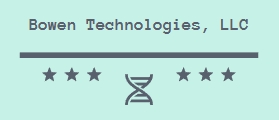“`html
Introduction to Cryogenic Grinding
Cryogenic grinding, also known as cryo-grinding, is a technique used in various industries to mill materials at temperatures significantly below ambient conditions. By utilizing liquid nitrogen or other cryogenic gases, materials such as rubber, plastics, and food products can be ground into finer particles without losing their integrity or properties. This article aims to guide potential buyers on how to purchase cryogenic grinding systems by considering user needs, applications, and key parameters necessary for making informed decisions.
Understanding Your Needs
Before investing in a cryogenic grinding system, it is crucial to understand your specific needs and requirements. Ask yourself the following questions:
- What materials do you intend to grind?
- What is the desired particle size distribution?
- What is the production volume required?
- Do you have any space or budget limitations?
Determining the type of materials to be processed is fundamental as different materials require different grinding techniques. For instance, polymers typically need a different
.jpg)
approach than organic materials. Moreover, consideration should be given to the desired particle size, as this will guide the choice of equipment and grinding mechanism.
Analyzing Applications and Industry Needs
Cryogenic grinding finds applications in various industries, including food production, plastics manufacturing, and pharmaceuticals. Each of these industries has unique requirements that must be addressed when purchasing a grinding system.
In the food industry, for example, it is essential to maintain the flavor and nutritional value of the ingredients. Cryogenic grinding can achieve this by reducing heat generation during the process. In the plastics industry, the need for specific particle sizes for downstream processing makes fine-tuning grinding parameters critical.
Here is a breakdown of typical applications
.jpg)
and their respective needs:
| Industry | Material Type | Common Applications | Critical Parameters |
|---|---|---|---|
| Food | Spices, herbs | Flavoring, seasoning | Particle size, temperature control |
| Plastics | Polyethylene, polypropylene | Recycling, compounding | Feed rate, nitrogen flow rate |
| Pharmaceuticals | Active ingredients | Formulation, particle size reduction | Cleanliness, homogenization |
This table serves as a quick reference to identify the relationship between industries, materials, applications, and critical parameters that should be considered when purchasing a cryogenic grinding system.
Evaluating Equipment Options
Once you clearly understand
.jpg)
your needs and the applications, the next step is to evaluate the available cryogenic grinding equipment. Consider the following factors when comparing different systems:
- Grinding Mechanism: The type of grinding mechanism (e.g., hammer mill, pin mill) significantly affects the quality and efficiency of the grinding process.
- Cooling Efficiency: The ability of the system to maintain low temperatures during grinding is critical to achieving the desired results.
- Production Capacity: Ensure the equipment can meet your production volume requirements without compromising on output quality.
- Maintenance and Support: Opt for manufacturers that provide robust support and maintenance services to ensure the longevity and efficiency of the equipment.
For instance, a pin mill is often recommended for materials requiring fine particle sizes, while a hammer mill is more suitable for larger materials. The ability to integrate the grinding system into your existing processes, such as feeding and packaging, should also be a key consideration.
Conclusion: Making the Right Investment
Purchasing a cryogenic grinding system is a significant investment that can enhance product quality, improve efficiency, and ultimately contribute to the profitability of your operations. By understanding your specific needs, analyzing industry applications, and evaluating equipment options carefully, you can make an informed decision that meets your requirements.
In summary, always consider the following steps:
- Identify material types and desired particle sizes.
- Analyze industry-specific applications and needs.
- Evaluate different grinding equipment options based on mechanisms, efficiency, capacity, and support.
By following these guidelines, you will be well-equipped to make a purchase that not only fulfills your current needs but also supports your future growth and innovation in your industry.
“`
This article provides a comprehensive overview of how to purchase cryogenic grinding systems, emphasizing user needs, industry applications, and critical equipment evaluations to aid potential buyers in making informed decisions.
